You are using an out of date browser. It may not display this or other websites correctly.
You should upgrade or use an alternative browser.
You should upgrade or use an alternative browser.
VTOL On Demand Mobility
- Thread starter Grey Havoc
- Start date
That's why Boeing bought them, presumably at a discount. Boeing is going to tell these cute silicon valley engineers that they're working on manned aviation, and then take the not quite FAA-rated autonomy software and sell it to the us government for nearly FAA aproved civilian airspace integrated military drones.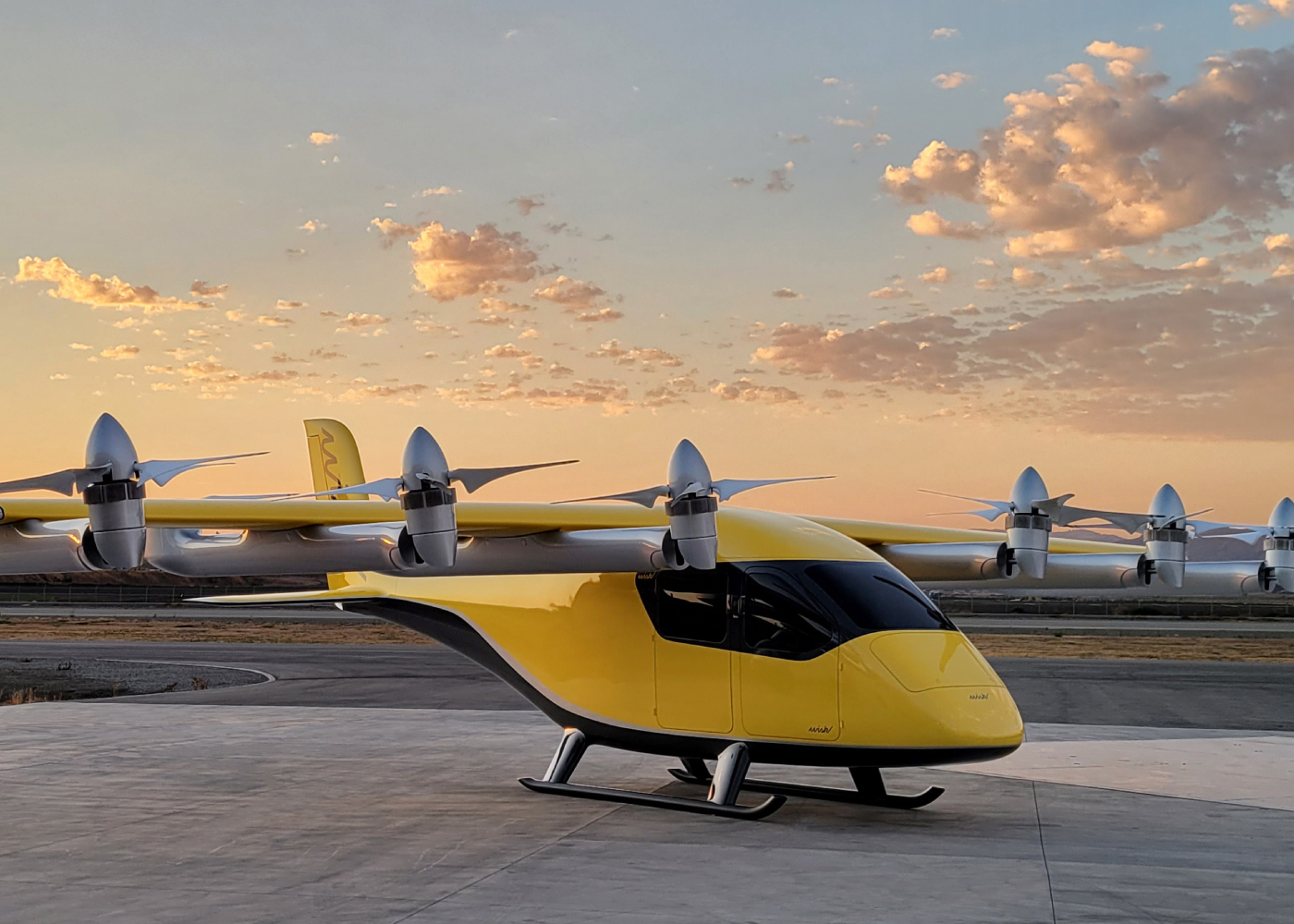
Wisk Aero CEO Brian Yutko on the transition to becoming a fully owned Boeing subsidiary
With Wisk Aero now becoming a wholly owned subsidiary of Boeing Company, Vertical reached out to Wisk CEO Brian Yutko for his thoughts on how this new chapter will shape the company’s course into AAM.verticalmag.com
"We remain absolutely steadfast on going directly to an uncrewed aircraft. There is no backup in the plan and there are no hidden pilot flight controls on board the aircraft"
"Naturally, the regulations can be improved over time. For example, I’d love for there to be specific requirements for subjects like detect and avoid, but as for now, the default is see and avoid. We’ll make the arguments for waivers and exemptions, but we’ll get there over time as an industry."
Does anyone feel it is an extremely high risk strategy to design this aircraft to be fully autonomous from day one with no backup plan and hope that FAA regulations will be in place to permit commercial operations when this thing is ready to enter service ? The FAA is still dragging its feet when it comes to allowing tiny delivery drones to overfly populated areas but Wisk thinks that getting regulatory approval for a vehicle of this size to fly unmanned over cities will not present a massive hurdle ? With the exception of Ehang nobody else is planning to do autonomous operations from day one.
Geez, Boeing (of Starliner & 737 MAX fame) and an EVSTOL startup (lithium batteries flying taxis, yeah !) picking a - doomed - fight with the FAA (ask SpaceX and Musk what they think of them !) over autonomous flight. Just because lithium batteries can't afford the weight of a pilot (and enough passengers, or any, but that's another story for another day).
What. could. possibly. go. wrong. ?
aonestudio
I really should change my personal text
- Joined
- 11 March 2018
- Messages
- 2,964
- Reaction score
- 7,493
Electra Rolls Out Blown-Lift eSTOL Demonstrator | Aviation Week Network
The piloted, two-seat technology demonstrator for Electra.aero's hybrid-electric ultra-short-takeoff-and-landing aircraft is set to fly this year for testing.
alberchico
I really should change my personal text
- Joined
- 14 January 2014
- Messages
- 707
- Reaction score
- 1,513
Electra Rolls Out Blown-Lift eSTOL Demonstrator | Aviation Week Network
The piloted, two-seat technology demonstrator for Electra.aero's hybrid-electric ultra-short-takeoff-and-landing aircraft is set to fly this year for testing.aviationweek.com
“We just could not close the business case for eVTOL using near-term technologies,” says Electra Vice President and General Manager J.P. Stewart"
I'm glad someone inside the electric aircraft industry is finally admitting it. But the business case for large numbers of this type of aircraft is a bit shaky too. There have many attempts in the past to create an aircraft whose short field performance was so good that Stolports would be built to accommodate them, like the Dash-7 and Twin Otter. With the exception of London City Airport, that concept has largely failed. Their earlier proposal (which has been removed from their website) that freight companies could build a small runway on their industrial sites to accommodate this aircraft also fail to take into account the NIMBY factor, as well as local laws and zoning regulations.
If anyone wants to know more about STOLports, this article explains the concept:

The Airports of Future Past- STOLports part one
Part one of this two-part post considers the history of the STOLport concept, using New York Times articles from the 1960’s and 70’s to reconstruct the largely untold story of the Manhattan STOLpor…
Maybe eStol is the way to go :
:
martinbayer
ACCESS: Top Secret
- Joined
- 6 January 2009
- Messages
- 3,397
- Reaction score
- 3,904
Please feel free to research my definition of ''rainbow technology" in the "Black projects: can we agree to disagree?" thread on this forum.
- Joined
- 24 November 2008
- Messages
- 1,549
- Reaction score
- 2,612
Just an observation: I the latest Volo promo clip we can see the attitude of the cabin in cruise flight (for a short moment). Not a big surprise, but I cannot recall to have seen this in one of their clips which contain real flight footage. Btw, is there any real flight footage of the latest Volocity version around?

Here is the clip:
View: https://twitter.com/volocopter/status/1669691242370809856?t=NjQL5IfWI4SFKWaXbc67qw&s=19
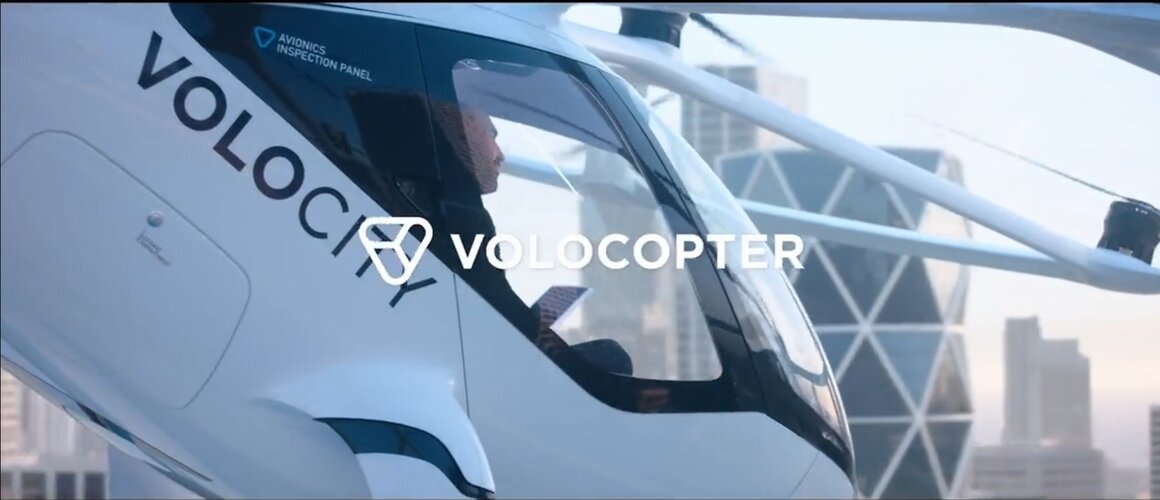
Here is the clip:
View: https://twitter.com/volocopter/status/1669691242370809856?t=NjQL5IfWI4SFKWaXbc67qw&s=19
Last edited:
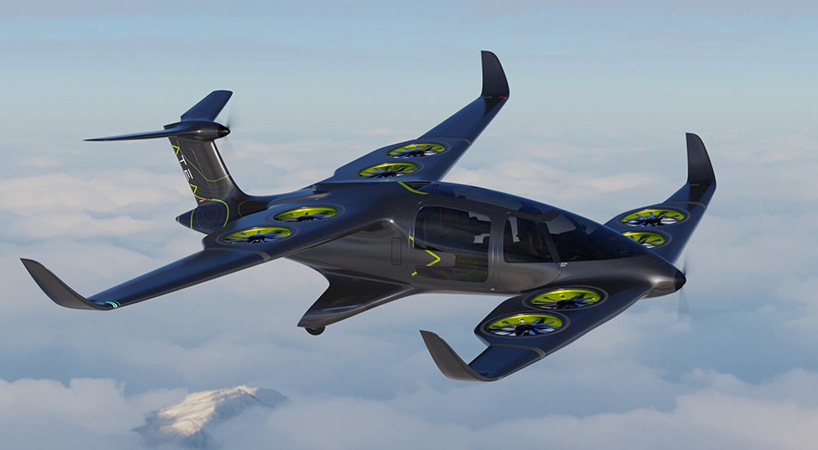
Fierce Competition Among eVTOL Players Ahead of the 2023 Paris Air Show
Getting closer to the first edition of the Paris Air Show held since the pandemic, eVTOL industry players – counting among them some legacy aerospace ...
www.defense-aerospace.com
alberchico
I really should change my personal text
- Joined
- 14 January 2014
- Messages
- 707
- Reaction score
- 1,513
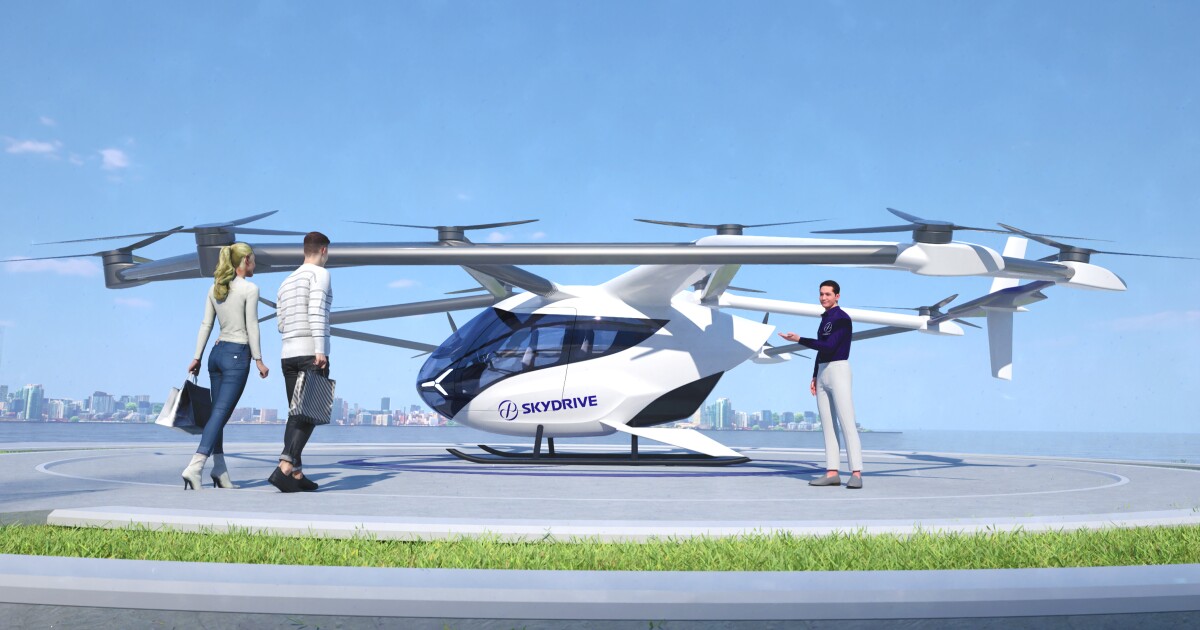
SkyDrive eVTOL gains an extra passenger seat and 50% range bump
Last year, Tokyo-based SkyDrive announced plans to launch an eVTOL taxi service at the World Expo 2025 in Osaka, Japan. Now the company is at the Paris Air Show to reveal design and specs changes and a production deal.
"The top air speed remains unchanged at 100 km/h (62 mph), but the per-charge range has increased to 15 km (9.3 miles) for point-to-point inner city hops or short sightseeing tours."
Once you factor in VFR reserves, I don't know how practical this aircraft is going to be for any applications with such extremely limited range.
alberchico
I really should change my personal text
- Joined
- 14 January 2014
- Messages
- 707
- Reaction score
- 1,513

Wisk Aero Shows Off Gen 6 Prototype Autonomous eVTOL - FLYING Magazine
Wisk Aero now has a Gen 6 prototype, which it will use for type certification, already underway with the FAA.
It's going to be interesting to see how fast this project moves with certification considering that it's going to be unmanned from day one.
martinbayer
ACCESS: Top Secret
- Joined
- 6 January 2009
- Messages
- 3,397
- Reaction score
- 3,904
Wisk prototype generations: 6
Wisk operational craft in service: 0
Wisk operational craft in service: 0
Last edited:
Not to hijack the thread with a new topic, but there is a very famous, lean, friendly and efficient cable car service running in one of the, once flagged, most dangerous city of the world that directly connect the low income area to the city center in... Medellin.No, in some towns (Sao Paulo, Berlin, Duisburg, Offenbach, St. Denis.....) the competing design would be a personal tank. Using cable cars is becomming increasingly dangerous....
I have used it as a foreigner with consistency, so I would tend to differ from your opinion.

Metrocable (Medellín) - Wikipedia
Last edited:
I don't want to start a political disscussion, but more than 21,000 knife attacks anually and people beeing regularily pushed on the rails are reasons to avoid puplic transportation at least in Germany...
From the wiki link:
Another advantage of cable cars is that this is not a mass transportation system per se. They are like taxis services, moving, in some cities, a gargantuan amount of people without having to pack them by hundreds. This tend to average the rate of aggressive behavior with overal statistics.
Studies have suggested strong correlations between the intervention of the Metrocables and dramatic reductions in crime associated with the areas where Medellín Metrocable has been introduced.
Another advantage of cable cars is that this is not a mass transportation system per se. They are like taxis services, moving, in some cities, a gargantuan amount of people without having to pack them by hundreds. This tend to average the rate of aggressive behavior with overal statistics.
We need more EVSTOL companies with the same pioneering spirit as Branson's Virgin or Oceangate. Screws those pesky regulations, hail libertarianism like Peter Thiel, they are the future of mankind... I mean, just read that inspirational interview with him
Wait, forget that.
“At some point, safety just is pure waste,” Stockton told journalist David Pogue in an interview last year. “I mean, if you just want to be safe, don’t get out of bed. Don’t get in your car. Don’t do anything.”
In another interview, Stockton boasted that he’d “broken some rules” in his career.
“I think it was General MacArthur who said you’re remembered for the rules you break,” Rush said in a video interview with Mexican YouTuber Alan Estrada last year. “And I’ve broken some rules to make this. I think I’ve broken them with logic and good engineering behind me.”
Wait, forget that.
i was thinking about trams (like the cable cars in San Francisco) when I heard the term cable cars. I do agree, that this is a good approach for many cities, especially those with a hilly terain, but it doesnt compete with a flexibel system for individuals.
alberchico
I really should change my personal text
- Joined
- 14 January 2014
- Messages
- 707
- Reaction score
- 1,513
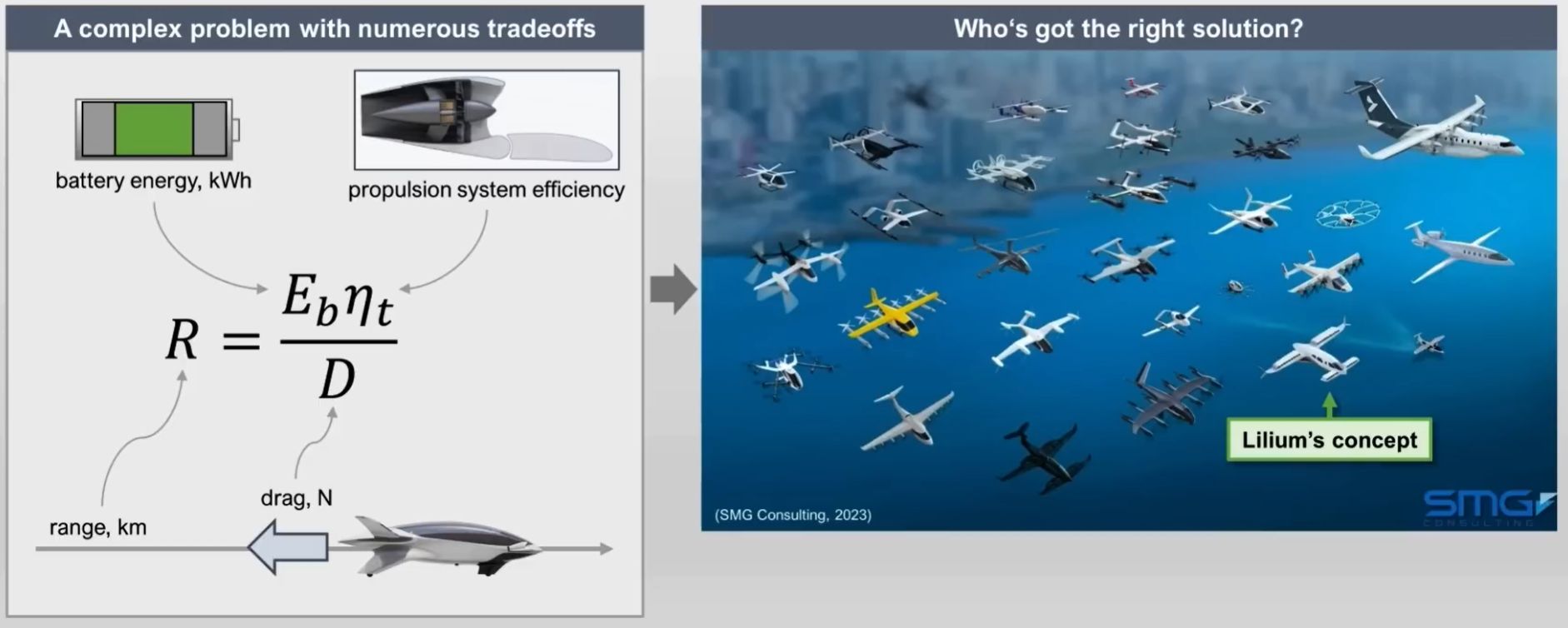
Will The Lilium Jet Work? A Deep-Dive Into The Physics Behind EVTOL Aircraft
The Lilium Jet is a proposed eVTOL (electric Vertical Take Off and Landing) aircraft that the German company Lilium GmbH has claimed it will bring to the market ‘soon’, which would made…
An extremely detailed analysis of whether Lilium's concept is feasible.
Reaper
ACCESS: Secret
- Joined
- 31 March 2009
- Messages
- 303
- Reaction score
- 140
Yeah the analysis is ok. Feasible is the wrong term. It should be: is it economically viable with the attached concept of operation.
Will The Lilium Jet Work? A Deep-Dive Into The Physics Behind EVTOL Aircraft
The Lilium Jet is a proposed eVTOL (electric Vertical Take Off and Landing) aircraft that the German company Lilium GmbH has claimed it will bring to the market ‘soon’, which would made…hackaday.com
An extremely detailed analysis of whether Lilium's concept is feasible.
Rhinocrates
ACCESS: Top Secret
- Joined
- 26 September 2006
- Messages
- 3,053
- Reaction score
- 7,780
More of an overview mixed with a sales pitch, but may be of interest. Frank Stephenson is a highly acclaimed designer, having worked on important projects for BMW (its first SUV), Ferrari, Maserati, McLaren.
View: https://www.youtube.com/watch?v=jn0_jPmfnbQ
- Joined
- 27 May 2008
- Messages
- 1,178
- Reaction score
- 2,483
More of an overview mixed with a sales pitch, but may be of interest. Frank Stephenson is a highly acclaimed designer, having worked on important projects for BMW (its first SUV), Ferrari, Maserati, McLaren.
View:https://www.youtube.com/watch?v=jn0_jPmfnbQ
He’s by his own admission not an engineer, and currently making loads of money out of graphic design consultancy to eVTOL companies, a booming business for these start ups. So of course he’s going to promote this as the best thing since sliced bread. Follow the money as they say.
BTW on his website, he claims to have “designed” the Lilium (as director of Design 2018-2019), but the 2019 Red Dot “design” award went to Mathis Cosson. Remember “design” here means selecting curves that are pleasing to the eye, rather than the fundamentally difficult issue of battery chemistry.
Last edited:
Rhinocrates
ACCESS: Top Secret
- Joined
- 26 September 2006
- Messages
- 3,053
- Reaction score
- 7,780
Indeed.Follow the money as they say.
BTW on his website, he claims to have “designed” the Lilium (as director of Design 2018-2019), but the 2019 Red Dot “design” award went to Mathis Cosson. Remember “design” here means selecting curves that are pleasing to the eye, rather than the fundamentally difficult issue of battery chemistry.
Designers straddle the space between engineering and styling. Towards the engineering end, they deal with ergonomics and packaging, having to accomodate aesthetic ideas with the requirements of legislation (which can be incredibly detailed and restrictive if you're wondering why all cars tend to look alike) and engineering (also heavily constrained by legislation - safety in a crash and all that). Luigi Colani, who has been discussed elsewhere, has tilted far more towards styling and an 'idea' of aerodynamics rather than its reality when he's ventured into transport design.
It's interesting that Lilium got someone known for car design and it probably reveals something about their attitude or aspiration towards EVTOL vehicles as a realisation of Blade Runner's spinners versus Airbus and most others, which see them as a class of helicopter.
In the area of battery chemistry, there has been a lot of talk about imminent breakthroughs with solid state batteries which may push a lot of concepts over the line into actual economic viability. In a few years. Like fusion.
Last edited:
Electric aero dreams fly on after Uber Air taxi’s hard landing
Once considered a flight of fancy, air taxis were about to become a reality. Will they really take off?
alberchico
I really should change my personal text
- Joined
- 14 January 2014
- Messages
- 707
- Reaction score
- 1,513

New Study: “Could Wind Blow eVTOL Industry Out of the Sky?” - eVTOL Insights
A recent study looking at the meteorological conditions eVTOLs may face while flying through and above cities offers a chilling warning. Sudden and regular wind gusts can not only form around city buildings, but could be strong enough to destabilise a flying taxi with the potential of knocking...
 evtolinsights.com
evtolinsights.com
This could be a serious issue for rooftop operations in urban areas.
e-Graphite
ACCESS: Confidential
- Joined
- 15 June 2023
- Messages
- 60
- Reaction score
- 133
The article focuses on power demands during turbulent takeoff/landing operations but nearly all of these eVTOL multirotor configurations appear to have weak yaw control in VTOL operations which also doesn’t bode well for rooftop landing pads.
New Study: “Could Wind Blow eVTOL Industry Out of the Sky?” - eVTOL Insights
A recent study looking at the meteorological conditions eVTOLs may face while flying through and above cities offers a chilling warning. Sudden and regular wind gusts can not only form around city buildings, but could be strong enough to destabilise a flying taxi with the potential of knocking...evtolinsights.com
This could be a serious issue for rooftop operations in urban areas.
These guys are up to something, all very hush hush.

MagLev Aero unveils "breakthrough" HyperDrive eVTOL propulsion system
A fascinating eVTOL project is about to come out of stealth, showcasing a "breakthrough HyperDrive propulsion technology" that MagLev Aero claims is "dramatically more quiet, efficient, safe, sustainable and emotionally appealing to the mass market."
Regards,
shedofdread
ACCESS: Top Secret
- Joined
- 14 November 2009
- Messages
- 593
- Reaction score
- 400
Well, now they're going to have a go at certifying it! More at the link - https://www.compositesworld.com/new...-evtol-progresses-with-faa-type-certificationAnother horror:
View: https://youtu.be/5oiWtYLA-Go
One with the lot: The folding, electric, street-legal, VTOL flying car
Spoiler: it has a hefty price tag. But then, the Aska would be a remarkable vehicle: a spacious, four-seat electric SUV with the ability to stop and fold out a set of wings and props to transform into an electric VTOL/STOL aircraft.newatlas.com
When will we have breathalyzers mandatory for drafting tables?
Certified? You'd need to be certified to go anywhere near the thing (etc etc)...
Intresting, I allready made a similar proposal in the flying car section, a hybrid system, were the batteries are charged during the flight (no exhaust emission regulations) and an electric drive system for road applications. Thats the only realistic way to get certified as an aircraft and a car.
There is a new idea for E-Stol (here it' a hybrid), which I find very promising:
View: https://www.youtube.com/watch?v=2EACB8-3wDE&ab_channel=DanJohnson
I guess, this prototype was built and tested without burning hundrets of million Dollars, unlike typical EVTOL startups are doing it....
I guess, this prototype was built and tested without burning hundrets of million Dollars, unlike typical EVTOL startups are doing it....
red admiral
ACCESS: Top Secret
- Joined
- 16 September 2006
- Messages
- 1,805
- Reaction score
- 2,377
I suppose this approach is easier for home build to modify it but I would think that electric motor clutched to main prop is neater. Maybe combined with clutch to compressor and pipe for blown ailerons. Then you've greater cruise efficiency.There is a new idea for E-Stol (here it' a hybrid), which I find very promising:
The trick is, that the props not only improve STOL capabilities and handling at low speed, but are also hidden in the wing during the flight, You can’t do that in a conventional layout and the efficiency of any solution which blows air through pipes will always be nasty. Pipes cause a lot of resistance and using a small amount of air with high velocity at slow speeds is terrible inefficient. The amount of effort would also be much higher than adding two electric motors with props.
We can see many EVTOL which turn their two bladed lifting props in longitudinal orientation to reduce drag, but this arrangement is by far less efficient than hiding the props in the wings.
We can see many EVTOL which turn their two bladed lifting props in longitudinal orientation to reduce drag, but this arrangement is by far less efficient than hiding the props in the wings.
I really like this approach. U-STOL (Ultra short t...) is the most promising technology for on-demand flight when combined with an hybrid setup.There is a new idea for E-Stol (here it' a hybrid), which I find very promising:
View: https://www.youtube.com/watch?v=2EACB8-3wDE&ab_channel=DanJohnson
I guess, this prototype was built and tested without burning hundrets of million Dollars, unlike typical EVTOL startups are doing it....
alberchico
I really should change my personal text
- Joined
- 14 January 2014
- Messages
- 707
- Reaction score
- 1,513
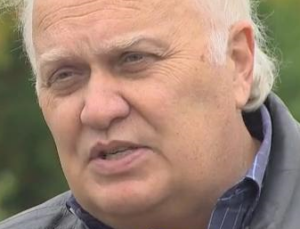
Pontifications: NASA pulls the plug on electric airplanes - Leeham News and Analysis
Some odds and ends after three weeks on the road. NASA pulls the plug on electric airplane research. NASA and Boeing’s Transonic Truss Brace Wing contract. Engines and the TTBW. July 18, 2023, © Leeham News: When NASA... Read More
Just a quick summary of NASA's abandonment of their electric aircraft project and the gloomy picture it paints for the electric aviation industry in general.
alberchico
I really should change my personal text
- Joined
- 14 January 2014
- Messages
- 707
- Reaction score
- 1,513
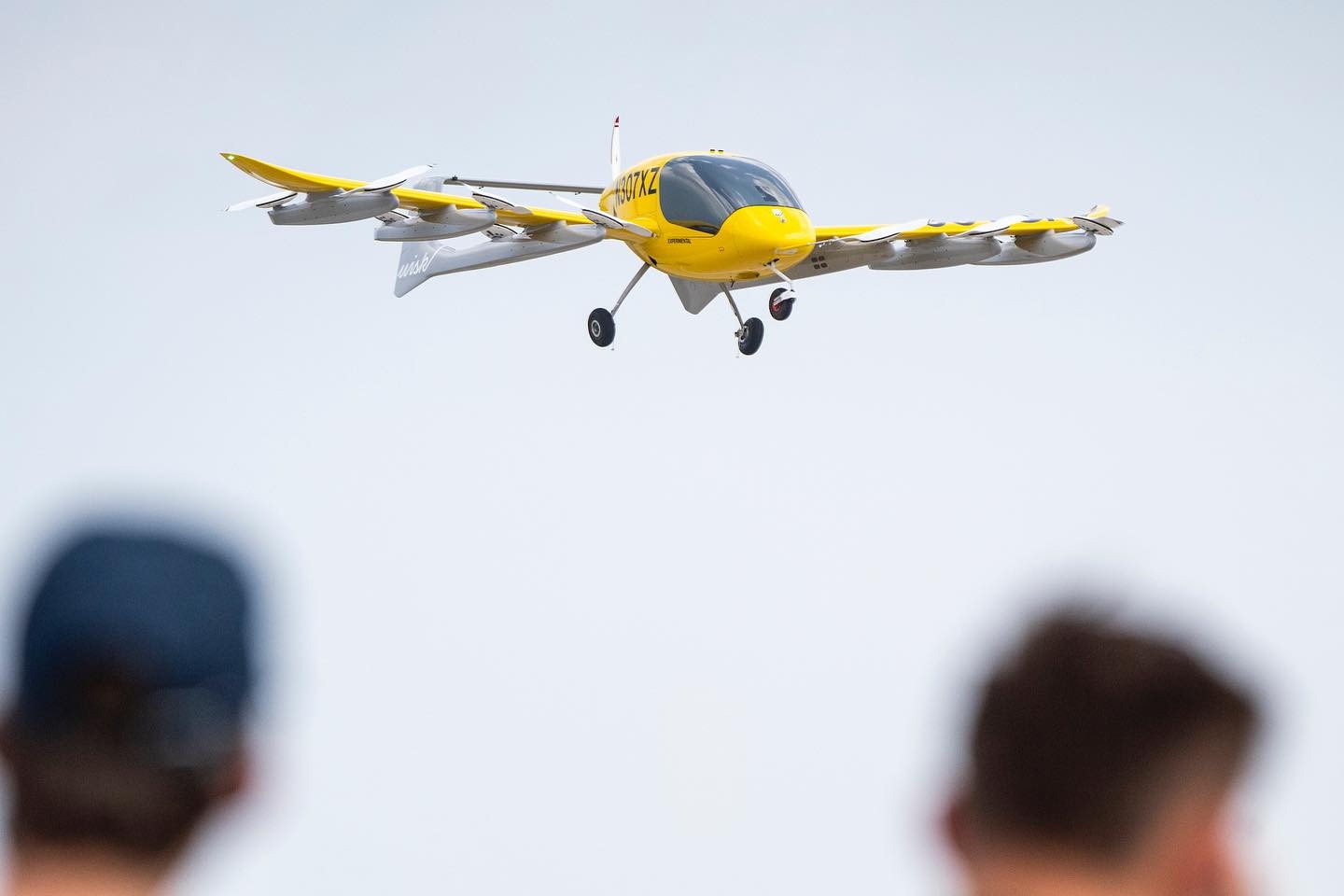
Boeing's Gen 6 Air Taxi Writes History at the EAA AirVenture Oshkosh
Aviation enthusiasts who were lucky enough to attend this year's EAA AirVenture event in Oshkosh witnessed a historic flight that paves the way for ...
We finally get to see one of these aircraft perform at an airshow. Pretty quiet.
martinbayer
ACCESS: Top Secret
- Joined
- 6 January 2009
- Messages
- 3,397
- Reaction score
- 3,904
You can put a toilet plunger rubbery face first in a Swiss wind tunnel, so I'm not holding my breath, until there are actual positive results...Textron Nexus eVTOL in wind tunnel in Switzerland.
Link
Notice the disc rotor size, away from your typical Evtol:

Notice also that the articulation of inner rotor would indicate a two lift plan in vertical mode, with one rotor disc higher than the other.
The concept also appears to be scalable, at least moderately with the balance in moment done by sizing the pitch rotors (at the back of each booms).
Just an assumption but I would guess batteries are in rear end of each booms, a safe place in regard to passengers safety.
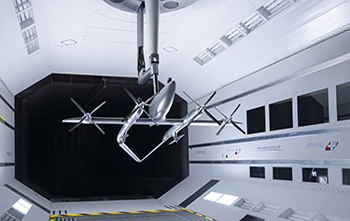
Notice also that the articulation of inner rotor would indicate a two lift plan in vertical mode, with one rotor disc higher than the other.
The concept also appears to be scalable, at least moderately with the balance in moment done by sizing the pitch rotors (at the back of each booms).
Just an assumption but I would guess batteries are in rear end of each booms, a safe place in regard to passengers safety.
Last edited:
Similar threads
-
Russia is working on a VTOL Fighter for the 21st Century
- Started by philipp7
- Replies: 4
-
-
-
Japanese 2050 Space Elevator project (Obayashi Corporation)
- Started by Grey Havoc
- Replies: 127
-
Powerpoint engineering and the downfall of quality
- Started by Orionblamblam
- Replies: 61
